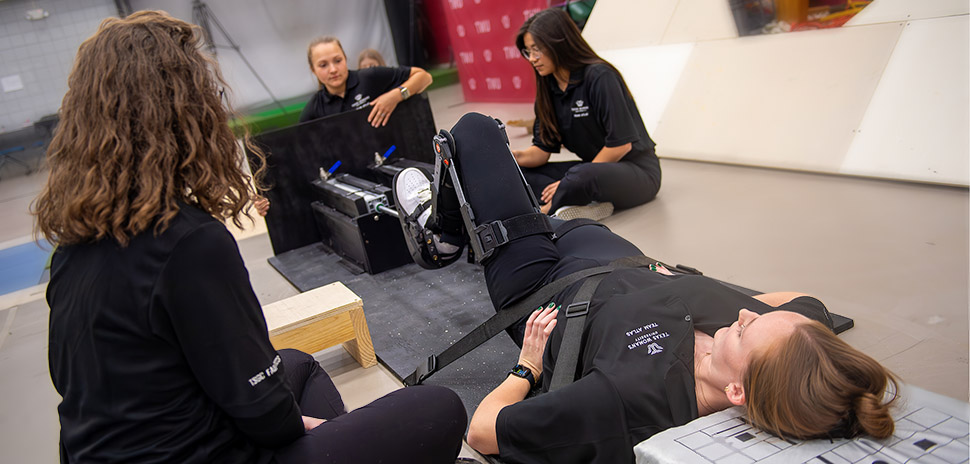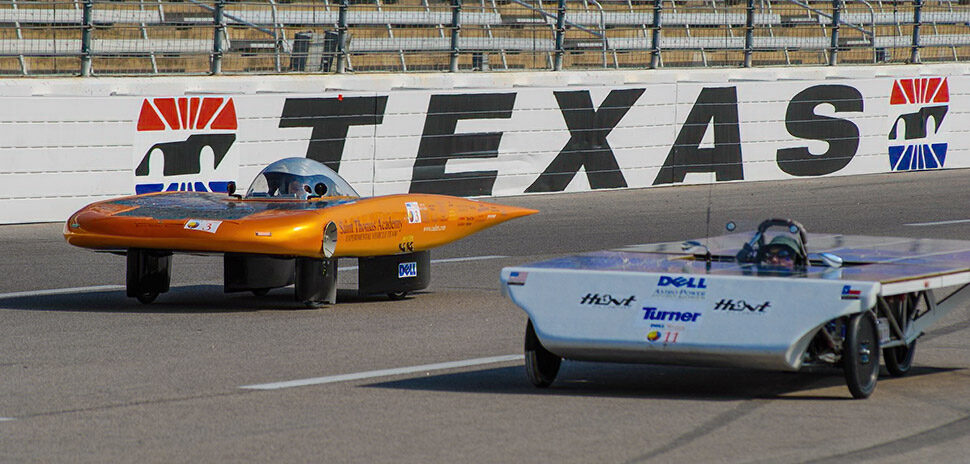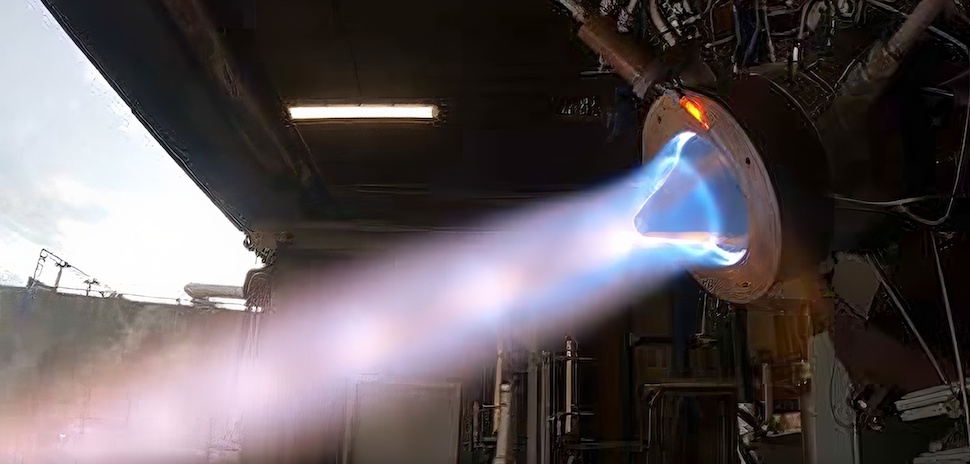Texas Woman’s University’s all-female team of undergraduate kinesiology students took the top overall prize this week at a NASA-sponsored design competition, marking the fourth time a TWU team has won first-place honors in the statewide challenge. Their solution: An exercise device for long-duration space flights.
The team created the device by focusing on what they knew best—the scientific study of human body movement, TWU said.
“The fact that we placed first overall in the best peer review subcategory is a big deal,” Rhett Rigby, a Texas Woman’s associate professor in kinesiology and the design team’s faculty adviser, said in a statement. “This tells us that we earned the respect of engineering students from other universities, and we continue to have a seat at the table as a non-traditional team in the Design Challenge.”
Building an exercise device for long-duration space flights
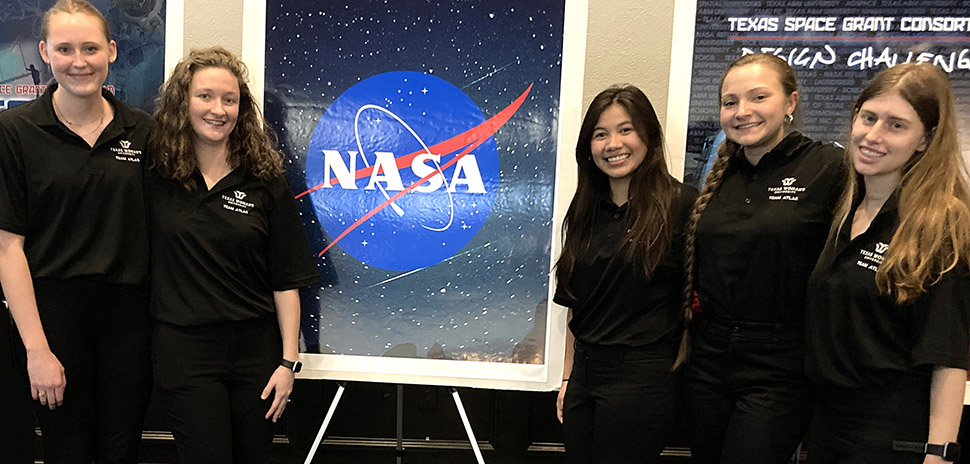
TWU’s NASA challenge-winning 2023 Space Design team. L to R: Hope Kenedy, Madison Hennessy, Daniela Venegas Polley, Daniela Venegas Polley, Team Lead Catherine Faubel, and Emma Becker [Photo: TWU]
During the fall semester, the team designed, built, and tested an exercise device for astronauts to be used during long duration space flight to prevent lower-body muscle atrophy.
Called Team Atlas, the TWU team was the only kinesiology department represented at the two-day Texas Space Grant Consortium (TSGC) Design Challenge held outside of Houston. Most of the 18 college teams in the competition, which wrapped up Monday, were made up of engineering students.
The TWU seniors also took first in peer review, second in poster category and oral presentation, and third in best model, TWU said.
Team members Catherine Faubel (team lead), Daniela Venegas Polley, Hope Kennedy, Madison Hennessy and Emma Becker all received scholarships from TSGC for their project.
The university said the first-place win continues the string of success for the School of Health Promotion and Kinesiology’s internship team.
Over the past 11 semesters that Texas Woman’s teams have entered the competition, they’ve placed in the top four a stunning eight times. This is the TWU’s fourth all-female team.
Like a stair climber machine for space
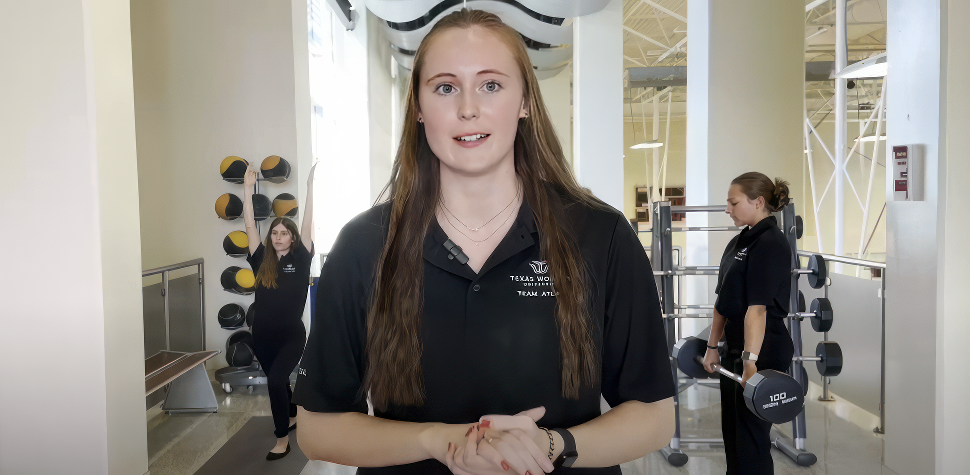
Hope Kennedy in foreground with fellow team members working out behind her. [Photo: TWU]
TWU said the TSGC Design Challenge gives students an opportunity to come up with a solution to help solve a research objective of importance to NASA. TWU said its team homed in on the muscle deterioration that occurs in astronauts, especially in the lower body, in microgravity.
To address this lower limb atrophy, the team built a working prototype for both resistance and aerobic exercise that targeted lower-body muscles, such as the quadriceps and hamstrings, TWU said. Astronauts could use the Stationary Lower Body Movement System during workouts and daily activities to keep their legs healthy during deep space missions.
“This project was unique because it was our first design to allow for exercise countermeasure programming in microgravity, and it was a 100% mechanical device with no integrated electronics,” Rigby said.
It’s like a stair climber machine at a gym, TWU said, but one that could be used in space.
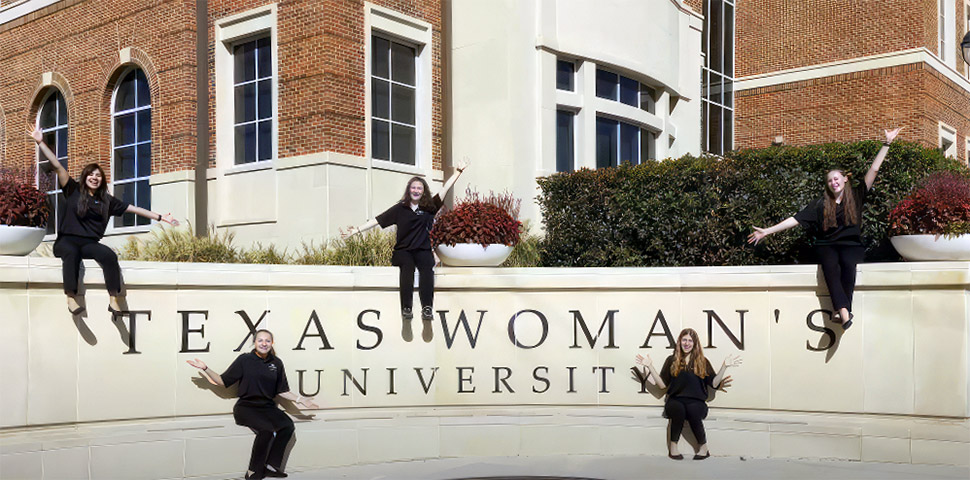
The TWU team back at home. [Photo: TWU]
With the device attached to an interior layer of the spacecraft, an astronaut would strap their feet into foot boots that are attached to leg braces. The foot boots are screwed into rods that are connected to pneumatic cylinders that generate resistance during leg movement, TWU said.
The device relies on the user to create force by extending and retracting the pistols and rods of the cylinders, the university said.
Its use of bi-directional resistance is what differentiates this device from others, TWU said. This type of resistance allows the user to exercise in a forward and reverse movement.
When the user presses down with their feet, they face resistance up to 200 pounds on each leg, TWU said. When they pull back, they are also receiving pressure of resistance.
“Everything from walking to jumping or simply standing, we’re working with the force of gravity. Here on earth resistance training is assisted by gravity, but how is that different in space when we don’t have gravity to work with? The research supports that a reduction in gravity impacts multiple components of astronauts, one of these being muscular composition,” the team said in a video. “Without gravity astronauts are experiencing muscle atrophy—a loss of muscle mass due to disuse. What does that mean for longer-duration spaceflight locations like Mars?”
Resistance exercises, those that cause one to work against a force, have been shown to reduce muscle atrophy in the presence of microgravity, TWU said.
“This team’s dedication to designing, fabricating and testing the best possible product in a three-month time period was so impressive,” Rigby said. “Some team members have put more than 500 hours each into this project, and it shows. To invest that much time makes winning all the more significant and meaningful.”
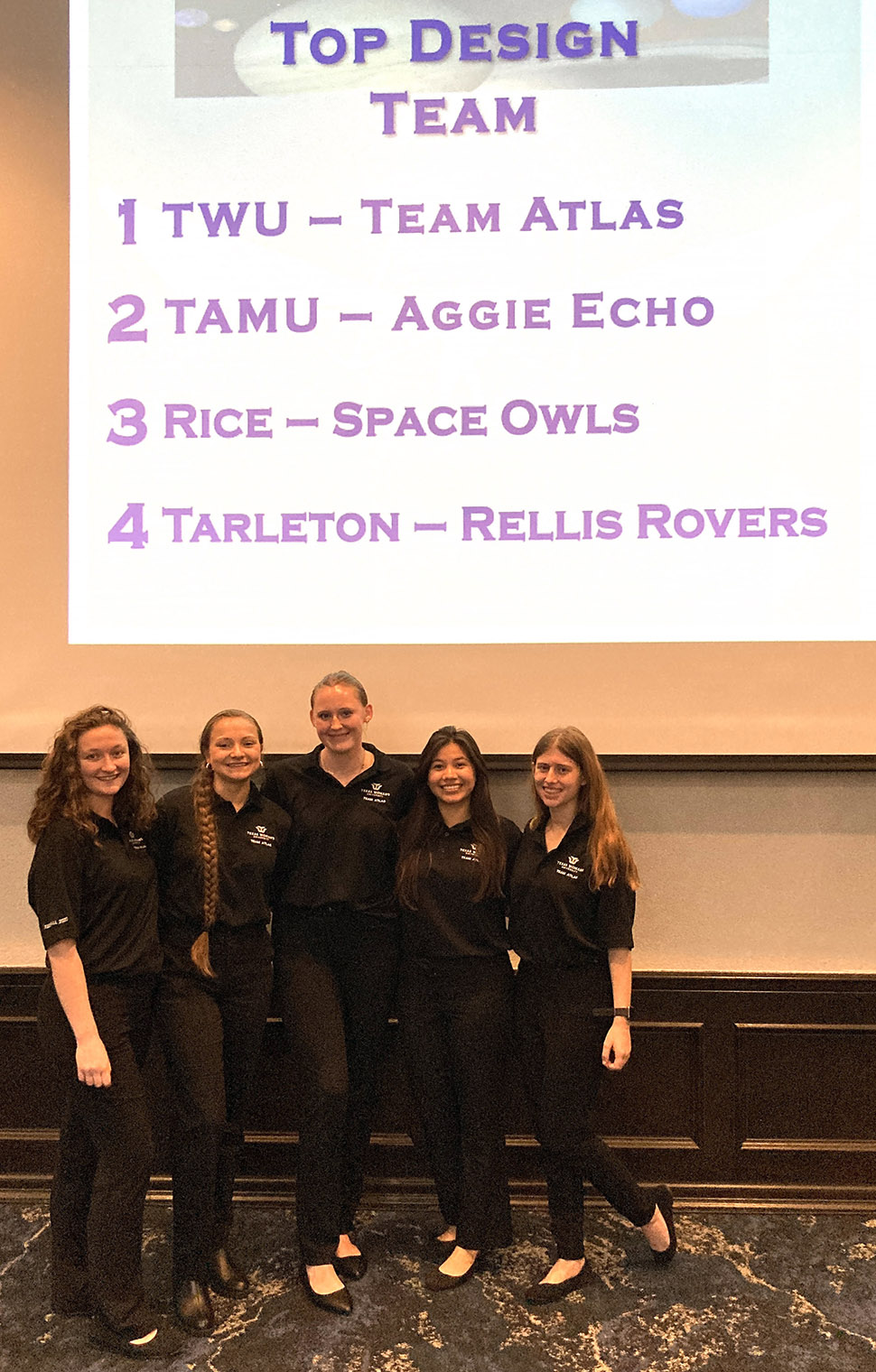
The NASA challenge-winning TWU team. [Photo: TWU]
![]()
Get on the list.
Dallas Innovates, every day.
Sign up to keep your eye on what’s new and next in Dallas-Fort Worth, every day.

